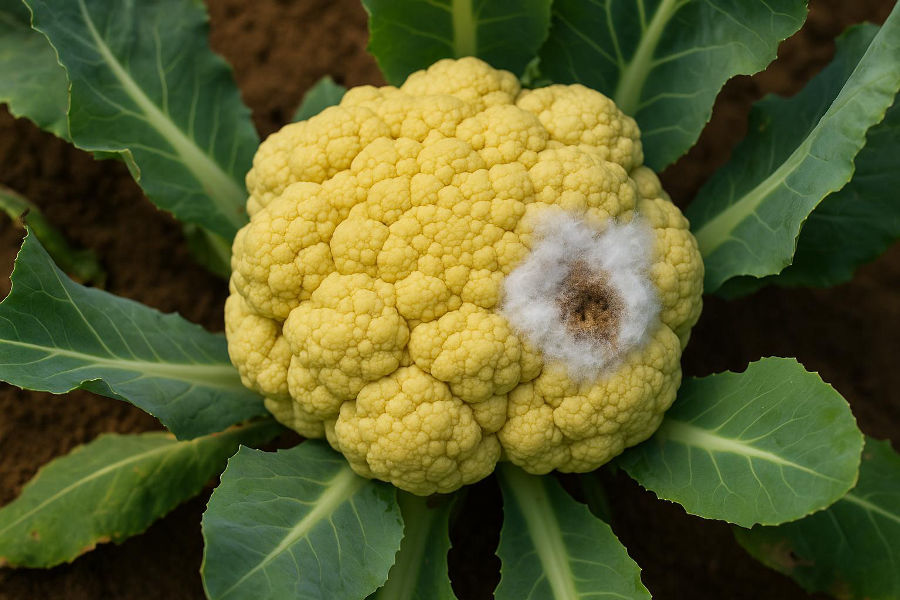White Mold in Cauliflower (Sclerotinia Rot) – Identification and Management
Cauliflower is an important vegetable crop, but it is susceptible to several fungal diseases. One of the most common and damaging diseases is White Mold, also known as Sclerotinia Rot, caused by the fungus Sclerotinia sclerotiorum.
Symptoms
-
Water-soaked, soft, brown spots on the curd.
-
A white, cotton-like fungal growth appears on the infected portion.
-
In advanced stages, small black bodies (sclerotia) may form on or inside the curd.
-
The affected portion becomes mushy, rots, and loses market value.
Favorable Conditions
-
Cool and humid weather (15 to 25°C).
-
Poor ventilation in the crop canopy.
-
Excessive irrigation or continuous wetness on the plant surface.
Management Practices
1. Cultural Control
-
Maintain proper plant spacing for good air movement.
-
Avoid overhead irrigation and excess moisture.
-
Rotate crops with non-hosts like cereals to break the disease cycle.
2. Chemical Control
-
Spray appropriate fungicides such as:
-
Carbendazim 50% WP at 1 gram per liter of water.
-
Boscalid + Pyraclostrobin (as per label recommendation).
-
Thiophanate-methyl based products.
-
-
Apply the first spray at early signs of infection and repeat as needed, especially during favorable weather.
3. Sanitation
Remove and destroy infected curds and plant parts.
Avoid growing cauliflower in fields with a known history of this disease.
Use healthy seedlings and ensure proper drainage in the field.
